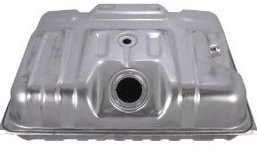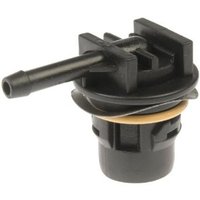Automotive Fuel Tank Problems

Although fuel tank problems are not very common, I have seen issues that needed to be addressed from time to time. Since it’s not a common automotive problem it is also not written about on the Internet very often.
Some of the problems with fuel tanks that we will talk about in this short article have to do with the overall construction of it. These over-sized liquid storage containers are more complicated than most people realize. We will also talk about a vehicle not taking fuel . This is where the fuel tank doesn’t accept the gas fast enough and the pump nozzle turns off while trying to fill it.
Sometimes we think that we will never have to worry about our fuel tanks at all. And in most cases you are correct this is one car part that is engineered well for safety and performance. However as I write this article ford is getting the word out to there customers that it has issued a recall on about a decade’s worth of F150s. Ford is going to replace the fuel tank retaining straps on these trucks because of heavy rusting.
They do not want gas tanks to start hitting the road surface during accidents. Although at this time I have not heard of any incidents of this happening. You can call your local dealer and provide them with your vehicle identification number to see if your truck is included in the gas tank strap recalls.
Sometimes gas tank problems are self-inflicted. As an example when I was a young man, I had a stereo system installed in my 79 Trans Am. the Car audio shop mounted an amplifier in the trunk. After I filled up the fuel tank a couple of times I noticed an overpowering gas smell in the car (not good for smoker). Upon further inspection I found that the stereo shop drilled holes to mount the amplifier right through the fuel tank. This is a good reason to learn how to install car audio and car alarms yourself.
Things to know about fuel tanks
The gas in the tank must survive very cold temperatures and then very hot temperatures as well. To contain vapors and allow for expansion and contraction of the petroleum fluid modern tanks have a separate air chamber that resembles a dome at the top. Also shape and mounting position of the fuel tank only allows for liquid to be installed in 90% of the compartment leaving 10% open for expansion and movement.
Most automotive fuel tanks have slosh baffles or surge plates to prevent gas from splashing around on the inside of the tank they also helps slow down the movement of it. Another advantage of these baffles is they can help funnel fuel to the pump when the tank is low and prevent the fuel pump from sucking dry.

The fuel filler tube looks different depending on the year make and model. All the ones that I have seen have a built-in restriction that prevents the full entry of the larger diesel fuel nozzle. The filler tube itself is mounted well above the gas tank and is usually short in length to prevent kinking. The filler tube is one of the leading causes of a tank to refuse to take gas.
If the tube is damaged or crushed gasoline will not flow quick enough into the tank and the safety on the gas station pumps will kick off. Another reason for a tank not to take fuel would be problems with the venting system. Although car-makers are not allowed to vent fuel vapor into the atmosphere they still vent it to a holding tank. As liquid rushes into the tank pressure can build up during the process. Most modern tanks have a vent system of some kind and when this malfunctions it can make it hard to put gas in the tank.
Check my fuel tank for what
An occasional inspection should be performed and an immediate inspection performed if problems are suspected. They should be inspected for leaks, road damage; metal units should be checked for corrosion and rust, defective or damaged seams. Also the mounting hardware should be checked for tightness and damage.
As I mentioned above on my Trans Am the gas tank was drilled into. Holes in plastic and metal tanks can sometimes be repaired by using special tank repair kits. I do not recommend this personally. When I tried it on my Trans Am it didn’t work. Also you really want to maintain the integrity of the original design.
My last recommendation about gas tanks is if you have to remove one always drain it before you begin removal. It is really harder to pull one that has fuel in it. It can also be dangerous. Give this page a bookmark just in case you run into some problems down the road. Or share this article with a friend that is having fuel tank problems. For more interesting articles this next link will take you back to the home page for the auto repair information blog.

